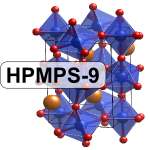Eutectic melting curves in the system MgO-SiO2 have been experimentally determined at lower mantle pressures using laser-heated diamond anvil cell technique. We investigated eutectic melting of bridgmanite + periclase in the MgO-MgSiO3 binary and bridgmanite + stishovite in the MgSiO3-SiO2 sub-system as the simplest models of natural peridotite and basalt. Eutectic melting was detected on the basis of the thermal perturbations (i.e. melting plateau) during the experiments, but also by textural and chemical analyses of recovered samples. We also performed a suite of sub-solidus experiments to compare and bracket the results.
The melting curve of model basalt occurs at lower temperatures, has a shallower dT/dP slope and slightly less curvature than the model peridotitic melting curve. Overall, melting temperatures detected in this study are in good agreement with previous experiments and ab initio simulations at ~25 GPa (Liebske and Frost, 2012; de Koker et al., 2013). However, at higher pressures our melting curves are systematically lower than curves extrapolated on the basis of thermodynamic modelling and atomistic simulations. Compared to previously published solidus curves obtained for natural basalt and peridotite (e.g. Fiquet et al., 2010; Andrault et al. 2011; Andrault et al. 2014 and Pradhan et al. 2015) the melting curves from this study are consequently higher.
Based on the comparison of the curvature of the model peridotite eutectic relative to an MgSiO3 melt adiabat, we infer that crystallization in a global magma ocean would begin at ~100 GPa rather than at the bottom of the mantle, allowing for an early basal melt layer. The model peridotite melting curve lies ~500 K above the mantle geotherm at the core-mantle boundary, indicating that it will not be molten. The model basalt melting curve intersects the geotherm at the base of the mantle, and partial melting of subducted oceanic crust is therefore expected.
In order to improve the thermal distribution during long subsolidus experiments and greatly reduce the temperature gradients, we have also developed a microfabrication technique for total metal-encapsulation of silicate samples together with a numerical 2D thermal distribution model which simulates experimental conditions with various pressure cell geometries.

 PDF version
PDF version
